Microneedling has grown in popularity in recent years as a minimally invasive cosmetic procedure to improve the appearance of fine lines, wrinkles, scars, and other skin issues. The procedure involves using a small handheld device with tiny needles that puncture the skin, stimulating the body’s natural healing process to produce more collagen and elastin. This article will explore the benefits of microneedling, the procedure itself, safety considerations, and aftercare.
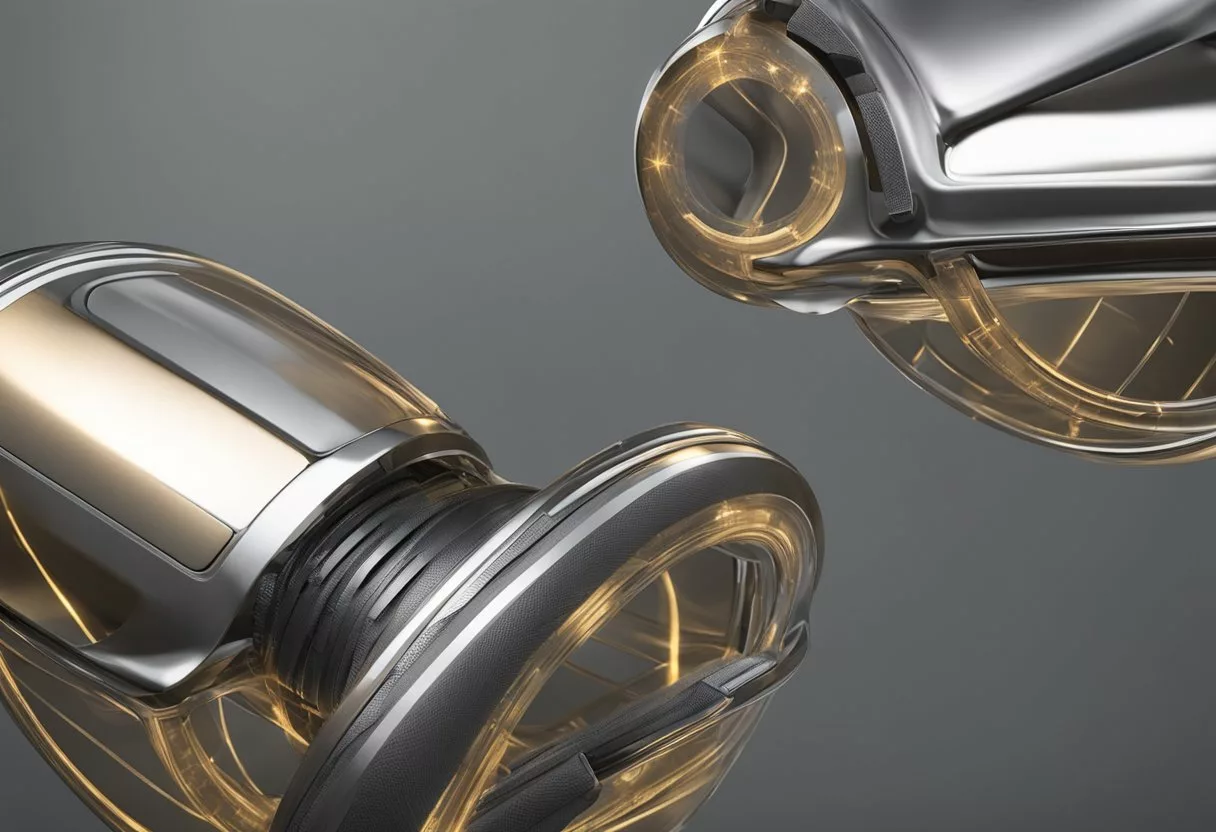
Microneedling has a variety of benefits for the skin, including improving skin texture, reducing the appearance of scars and hyperpigmentation, and increasing collagen production. It can also help with fine lines and wrinkles, acne, and even hair loss. The procedure is relatively quick and easy, with minimal downtime and few side effects. However, it is important to choose a qualified professional and follow proper aftercare instructions to ensure the best results.
Key Takeaways
- Microneedling is a minimally invasive cosmetic procedure that uses tiny needles to puncture the skin, stimulating the body’s natural healing process to produce more collagen and elastin.
- Microneedling has a variety of benefits for the skin, including improving texture, reducing the appearance of scars and hyperpigmentation, and increasing collagen production.
- It is important to choose a qualified professional and follow proper aftercare instructions to ensure the best results.
Understanding Microneedling
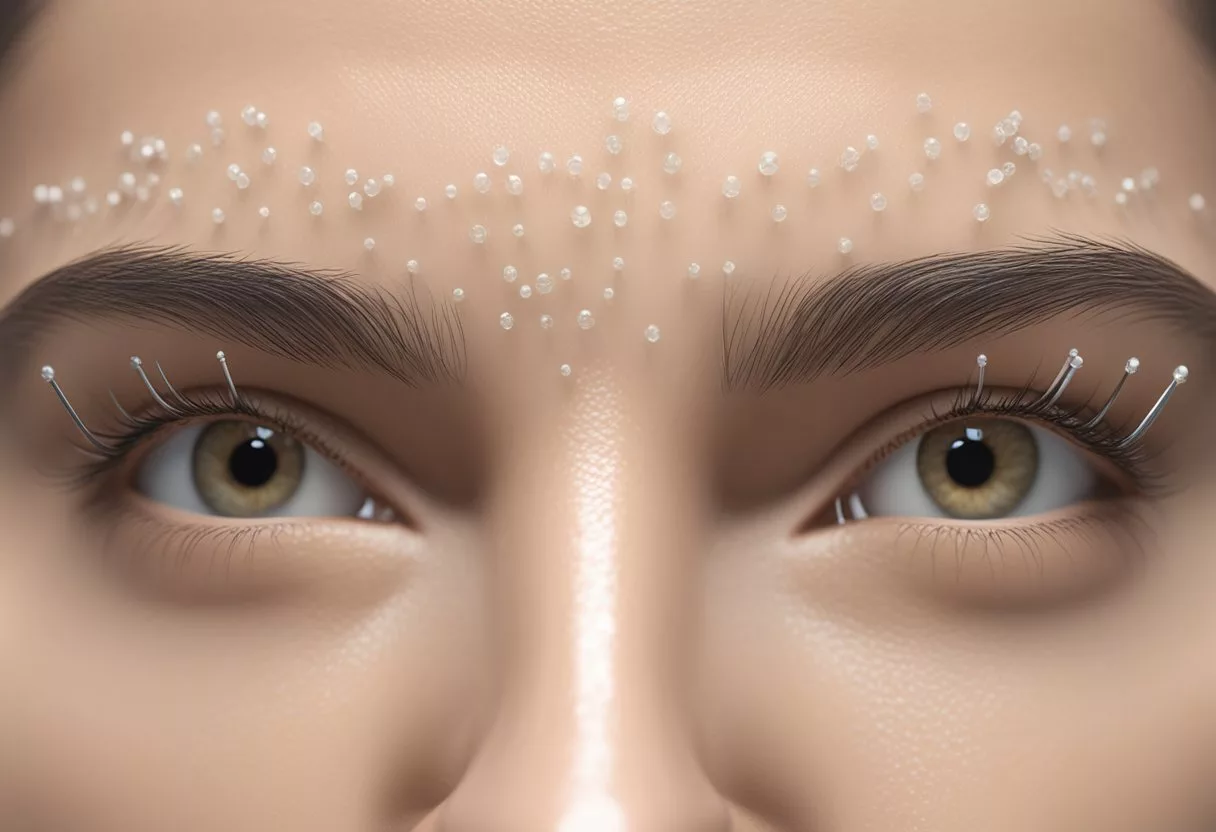
What Is Microneedling?
Microneedling is a minimally invasive cosmetic procedure that involves puncturing the skin with tiny needles to induce collagen production and skin rejuvenation. The needles create micro-injuries that stimulate the body’s natural healing process, resulting in the growth of new collagen and elastin, which help to improve the texture and appearance of the skin. Microneedling is also known as collagen induction therapy.
The History of Microneedling
Microneedling has been used for centuries in traditional Chinese medicine and acupuncture. The modern technique of microneedling was first introduced in the 1990s by a plastic surgeon named Dr. Des Fernandes. Dr. Fernandes created a handheld roller device with tiny needles that could be used to puncture the skin and stimulate collagen production. Since then, microneedling has become a popular cosmetic procedure and has been used to treat a variety of skin concerns, including acne scarring, fine lines, and wrinkles.
Types of Microneedling Devices
There are several types of microneedling devices available, including dermarollers, dermapens, and dermastamps. Dermarollers are handheld devices with a roller head covered in tiny needles that are rolled over the skin to create micro-injuries. Dermapens are electronic devices that use a motor to rapidly puncture the skin with tiny needles. Dermastamps are handheld devices with a stamp-like head that is pressed into the skin to create micro-injuries.
Microneedling devices can vary in needle length, with longer needles used for deeper penetration and shorter needles used for more superficial treatments. It is important to choose a device with the appropriate needle length for the desired treatment area and skin type.
Overall, microneedling is a safe and effective cosmetic procedure for improving the texture and appearance of the skin. However, it is important to consult with a licensed healthcare professional before undergoing any cosmetic procedure.
Benefits of Microneedling

Microneedling, also known as collagen induction therapy, is a minimally invasive cosmetic procedure that involves puncturing the skin with tiny needles to stimulate collagen production. This procedure has gained popularity due to its numerous benefits for the skin. Below are some of the benefits of microneedling.
Collagen Induction Therapy
Microneedling is an effective way to stimulate collagen production, which is essential for maintaining healthy and youthful-looking skin. Collagen is a protein that provides structure to the skin, making it firm and supple. As we age, our bodies produce less collagen, leading to the formation of fine lines, wrinkles, and sagging skin. Microneedling helps to boost collagen production, leading to smoother, firmer, and more youthful-looking skin.
Reduction of Fine Lines and Wrinkles
Microneedling is an effective treatment for reducing the appearance of fine lines and wrinkles. The tiny needles used in the procedure create micro-injuries in the skin, which triggers the body’s natural healing response. This response includes the production of new collagen and elastin, which help to plump up the skin and reduce the appearance of fine lines and wrinkles.
Improvement in Skin Texture and Tone
Microneedling can also help to improve the overall texture and tone of the skin. The procedure helps to promote cell turnover, which can lead to smoother, brighter, and more even-toned skin. Additionally, microneedling can help to reduce the appearance of hyperpigmentation, age spots, and other skin discolorations.
Treatment of Scars and Stretch Marks
Microneedling can be an effective treatment for scars and stretch marks. The procedure helps to break up scar tissue and stimulate the production of new collagen, which can help to improve the appearance of scars and stretch marks over time.
Enhanced Product Absorption
Microneedling can also enhance the absorption of skincare products. The tiny punctures created in the skin during the procedure allow for better penetration of serums and other skincare products, leading to more effective results.
Overall, microneedling has numerous benefits for the skin, including the stimulation of collagen production, reduction of fine lines and wrinkles, improvement in skin texture and tone, treatment of scars and stretch marks, and enhanced product absorption. It is a safe and effective way to improve the overall health and appearance of the skin.
Microneedling Procedure
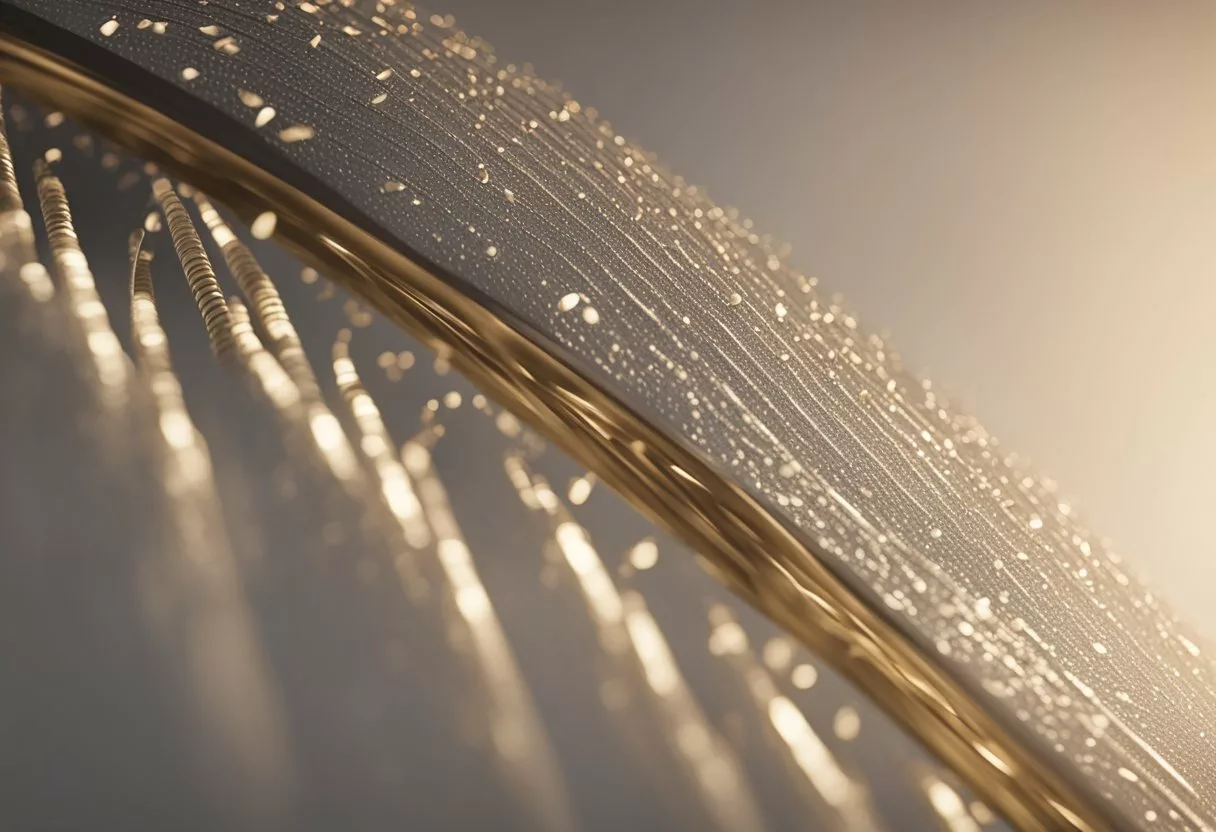
Microneedling is a minimally invasive procedure that uses fine needles to create tiny punctures in the skin. The procedure can be performed by a dermatologist or an aesthetician. Before the treatment, the provider will clean the skin and apply a numbing cream to reduce any discomfort during the procedure.
Before the Treatment
Before the treatment, the patient should avoid sun exposure and stop using any topical retinoids or exfoliants for at least a week. The provider will also assess the patient’s skin and determine the appropriate depth of the needles for the specific skin concern being addressed.
During the Treatment
During the treatment, the provider will use a microneedling device to create tiny punctures in the skin. The device can be adjusted to different depths depending on the skin concern being addressed. The provider will move the device over the skin in a specific pattern, ensuring that all areas are treated evenly.
After the Treatment
After the treatment, the skin may be red and sensitive for a few days. The provider will apply a soothing serum and sunscreen to protect the skin. The patient should avoid sun exposure and intense physical activity for at least 24 hours after the treatment. The provider may also recommend specific skincare products to use during the healing process.
Microneedling is a safe and effective procedure for improving skin texture, reducing fine lines and wrinkles, and minimizing the appearance of scars. The healing process after the treatment is minimal, and most patients can return to their normal activities within a few days. However, it is essential to follow the provider’s aftercare instructions to ensure the best possible results.
Safety and Side Effects

Microneedling is generally considered a safe and effective treatment for a variety of skin concerns. However, it is important to be aware of the potential risks and side effects before undergoing the procedure.
Potential Risks
As with any medical procedure, there is a risk of infection with microneedling. It is important to ensure that the equipment used is properly sterilized and that the treatment is performed in a clean environment to minimize this risk. In addition, some individuals may be at a higher risk of infection due to underlying medical conditions or medications they are taking.
Other potential risks of microneedling include redness, bleeding, discomfort, swelling, and bruising. These side effects are generally mild and should subside within a few days to a week after treatment. However, in rare cases, more severe side effects such as scarring or hyperpigmentation may occur.
Common Side Effects
The most common side effects of microneedling are redness and mild swelling. These side effects usually subside within a few hours to a day after treatment. Some individuals may also experience slight bleeding or bruising at the treatment site.
Contraindications
Microneedling may not be suitable for everyone. Individuals with certain medical conditions or skin conditions may be advised against the procedure. Some contraindications include:
- Active acne or cold sores
- Eczema, psoriasis, or other chronic skin conditions
- History of keloid scarring
- Use of blood thinners or other medications that affect blood clotting
- Pregnancy or breastfeeding
It is important to consult with a qualified healthcare provider to determine if microneedling is a safe and appropriate treatment option for you.
Microneedling for Specific Skin Conditions
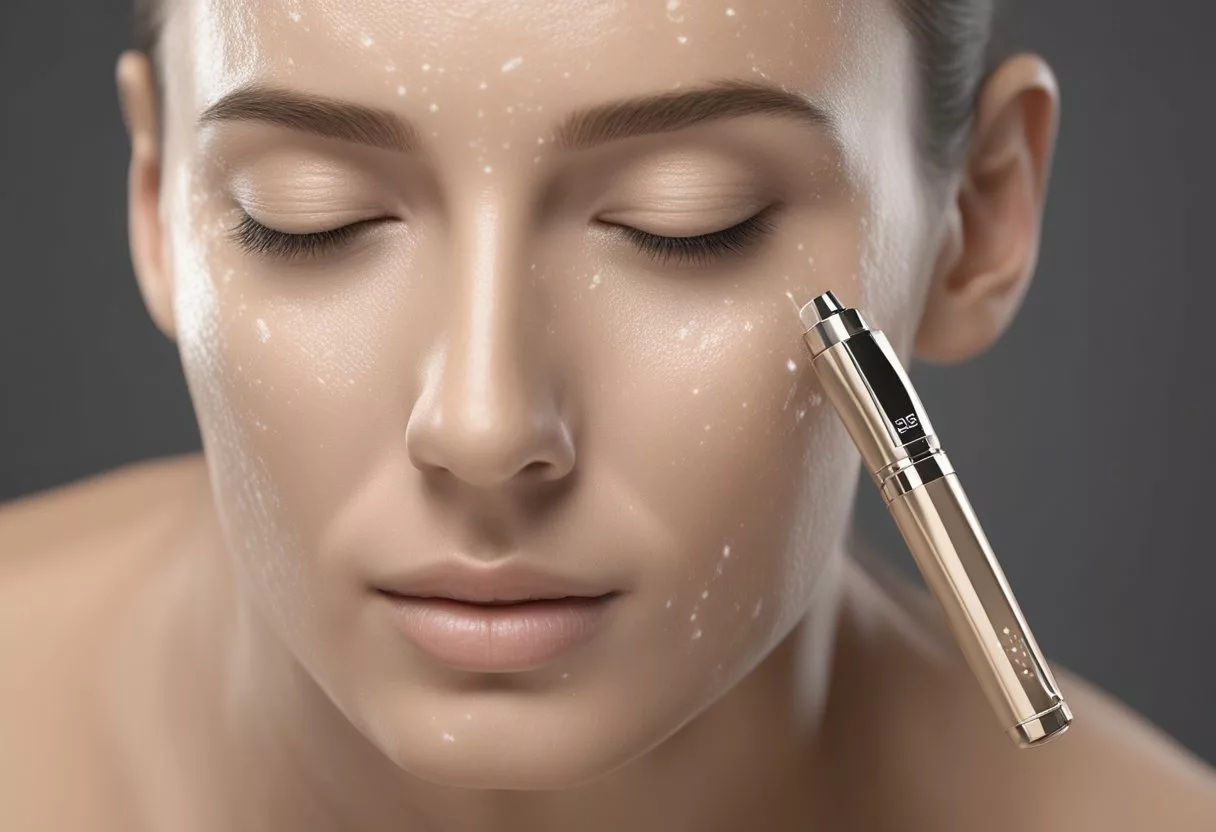
Microneedling is a versatile treatment that can address a variety of skin concerns. In addition to improving overall skin texture and tone, microneedling can also target specific skin conditions. Here are some of the skin conditions that microneedling can help improve:
Acne and Acne Scars
Microneedling can help improve the appearance of acne and acne scars. By creating tiny punctures in the skin, microneedling can stimulate collagen production, which can help smooth out the appearance of acne scars. Microneedling can also help reduce the appearance of active acne by helping to unclog pores and reduce inflammation.
Hyperpigmentation and Dark Spots
Microneedling can help reduce the appearance of hyperpigmentation and dark spots. By creating small punctures in the skin, microneedling can help break up areas of hyperpigmentation and stimulate the production of new, healthy skin cells. This can result in a more even skin tone and a reduction in the appearance of dark spots.
Aging Skin and Elasticity
Microneedling can help improve the appearance of aging skin by stimulating collagen and elastin production. As we age, our skin produces less collagen and elastin, which can lead to wrinkles, fine lines, and sagging skin. By creating small punctures in the skin, microneedling can help stimulate the production of these proteins, resulting in firmer, smoother, and more youthful-looking skin.
Skin Diseases
Microneedling can also be used to treat certain skin diseases, such as rosacea, eczema, and psoriasis. By creating small punctures in the skin, microneedling can help reduce inflammation and improve the overall health of the skin. However, it is important to note that microneedling may not be suitable for all skin types and conditions. It is important to consult with a dermatologist or skincare professional before undergoing any microneedling treatment.
In summary, microneedling is a versatile treatment that can help improve the appearance of a variety of skin concerns. By creating small punctures in the skin, microneedling can stimulate collagen and elastin production, reduce inflammation, and improve overall skin health. Whether you are looking to improve the appearance of acne scars, reduce hyperpigmentation, or combat the signs of aging, microneedling may be a suitable treatment option for you.
Choosing a Microneedling Professional

Microneedling is a minimally invasive cosmetic procedure that requires expertise and skill to perform. Choosing the right professional is essential to achieve optimal results and avoid complications. Here are some factors to consider when selecting a microneedling professional.
Qualifications to Look For
When considering a microneedling professional, it is important to ensure that they have the necessary qualifications and training to perform the procedure safely and effectively. Look for professionals who have completed a certified training program in microneedling and have experience performing the procedure.
Certifications and credentials to look for include:
- Certified Dermatologist
- Plastic Surgeon
- Aesthetician
- Medical Spa
It is also important to check the professional’s license and ensure that they are in good standing with their regulatory body. This can be done by contacting the licensing board or searching online databases.
Consulting a Certified Dermatologist
Consulting a certified dermatologist is recommended when considering microneedling. Dermatologists are medical doctors who specialize in skin care and have extensive training in the anatomy and physiology of the skin. They can assess your skin type and condition, recommend the appropriate treatment plan, and perform the procedure safely and effectively.
When consulting a dermatologist, ask about their experience with microneedling and the type of device they use. A reputable dermatologist will be happy to answer your questions and provide you with information about the procedure.
In summary, choosing the right microneedling professional is essential to achieve optimal results and avoid complications. Look for professionals with the necessary qualifications and training, and consider consulting a certified dermatologist for the best outcomes.
Cost and Considerations

Microneedling is a cosmetic procedure that can improve the appearance of the skin by stimulating collagen production. While the benefits of microneedling are well-established, the cost of the procedure is a consideration for many people. In this section, we will discuss the average cost of microneedling, factors that influence the cost, and whether insurance covers the procedure.
Average Cost of Microneedling
The cost of microneedling can vary depending on several factors, such as the location of the clinic, the experience of the provider, and the size of the area being treated. According to a search result from RealSelf, individual microneedling treatment sessions typically cost $100-$200, but a series of at least three is recommended for optimal results. The overall costs will depend on how many treatments you have, as well as your provider’s level of experience and where they practice.
Another search result from Healthline suggests that microneedling can cost anywhere from $200 to $800 per session. The overall costs depend on the size of the area being worked on, the number of sessions needed, and the professional’s specific rates. An in-office treatment will set you back somewhere between $100 and $700, depending on the size of the area being treated.
Factors Influencing Cost
The cost of microneedling can be influenced by several factors. One of the most significant factors is the size of the area being treated. Larger areas such as the back or legs may cost more than smaller areas such as the face or neck. Another factor that can influence the cost is the experience of the provider. More experienced providers may charge more for their services.
The location of the clinic can also influence the cost of microneedling. Clinics in larger cities or more affluent areas may charge more for their services. Finally, the number of sessions required can also influence the overall cost of the procedure. Most providers recommend a series of at least three sessions for optimal results.
Insurance and Microneedling
Microneedling is considered a cosmetic procedure and is generally not covered by insurance. However, some providers may offer financing options to make the procedure more affordable. It is important to check with your insurance provider to see if they cover any portion of the cost of the procedure.
In conclusion, the cost of microneedling can vary depending on several factors such as the size of the area being treated, the experience of the provider, and the number of sessions required. While insurance generally does not cover the cost of the procedure, financing options may be available.
Comparing Microneedling with Other Treatments
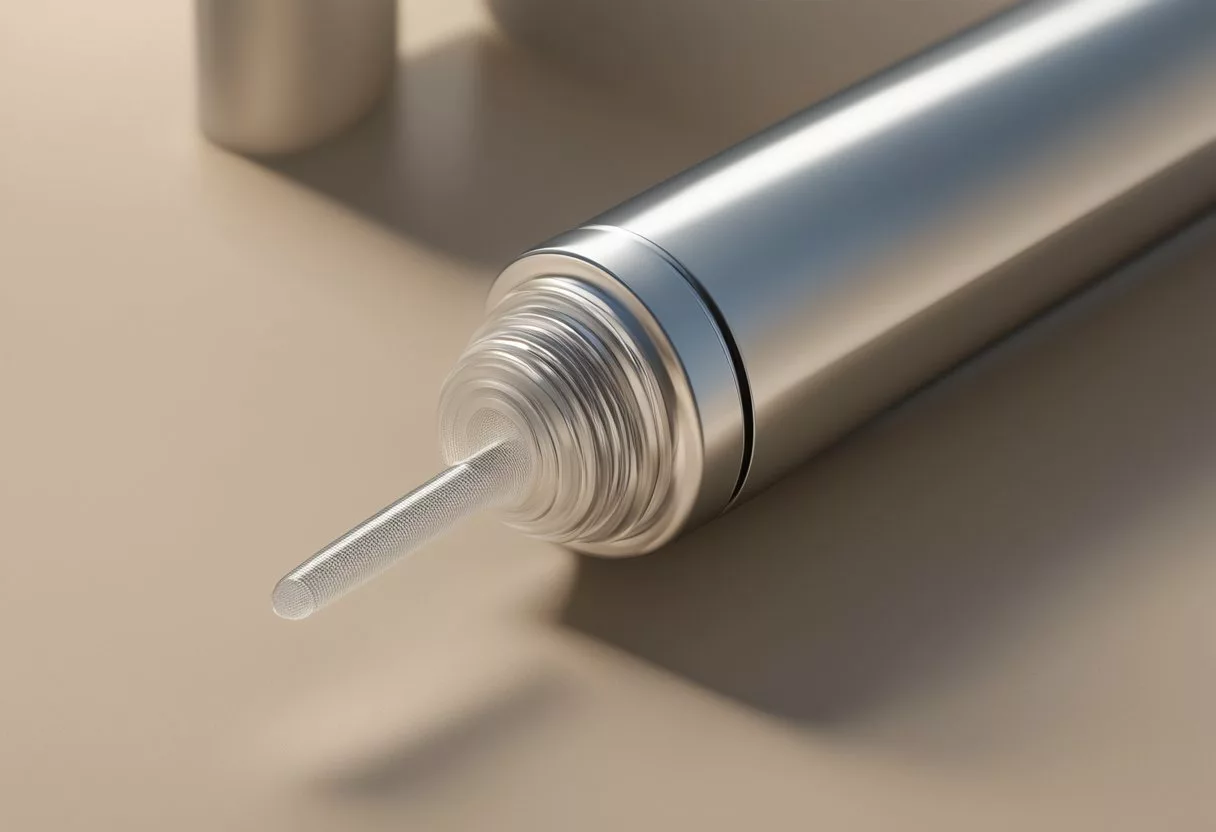
Microneedling is a popular skin rejuvenation treatment that involves creating micro-injuries in the skin to stimulate collagen production and improve skin texture. While microneedling alone can be effective, combining it with other treatments can yield even better results. In this section, we will compare microneedling with other common skin treatments.
Microneedling vs. Laser Treatments
Laser treatments are another popular option for skin rejuvenation. Laser resurfacing can effectively address concerns such as sun damage, scars, and age spots. However, it is a more intensive procedure compared to microneedling and may require downtime for recovery. Additionally, laser treatments may not be suitable for all skin types, and they can be more expensive than microneedling.
Microneedling vs. Chemical Peels
Chemical peels are another option for improving skin texture and quality. Like microneedling, chemical peels work by creating controlled injuries to the skin. However, chemical peels can be more aggressive than microneedling and may require a longer recovery time. They can also be more expensive and may not be suitable for all skin types.
When comparing microneedling to other treatments, it’s important to consider the individual’s skin type and concerns. While laser treatments and chemical peels can be effective, they may not be suitable for everyone. Microneedling is a more gentle option that can be customized to meet the individual’s specific needs. Additionally, microneedling can be combined with other treatments, such as PRF or PDGF+, to enhance its effectiveness.
In summary, while there are many options for improving skin texture and quality, microneedling is a safe and effective treatment that can be customized to meet the individual’s specific needs. By combining microneedling with other treatments, such as PRF or PDGF+, patients can achieve even better results.
Aftercare and Maintenance
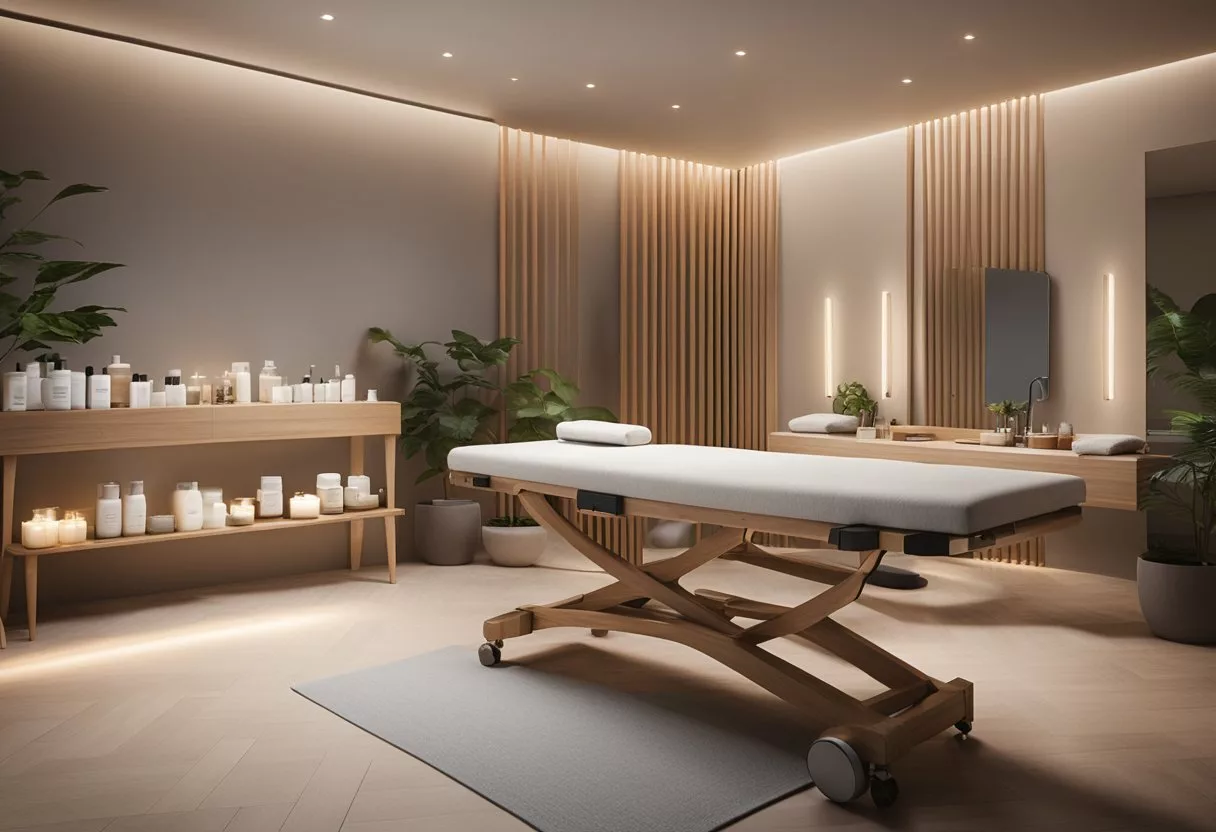
Microneedling is a minimally invasive procedure that involves creating tiny punctures in the skin to stimulate collagen production and improve skin texture and tone. While the procedure itself is relatively quick and painless, proper aftercare is essential to ensure optimal results and minimize the risk of complications.
Post-Procedure Care
After the procedure, the treated area may be red, swollen, and sensitive to the touch. It is essential to avoid touching or rubbing the treated area for at least 24 hours to prevent infection and irritation. Patients should also avoid sun exposure for at least 24 hours after the procedure to prevent sun damage and further irritation.
Patients may experience flaking or peeling of the skin after microneedling, which is a normal part of the healing process. It is essential to keep the skin moisturized during this time and avoid using harsh or abrasive skincare products that could further irritate the skin. Patients should also avoid applying makeup for at least 24 hours after the procedure to prevent infection and irritation.
Long-Term Skin Maintenance
To maintain the results of microneedling, patients should adopt a long-term skincare routine that includes regular exfoliation, moisturization, and sun protection. Patients should avoid sun exposure as much as possible and use a broad-spectrum sunscreen with an SPF of at least 30 every day to prevent sun damage and premature aging.
Patients should also avoid using topical anesthetics before microneedling, as these can increase the risk of complications and interfere with the healing process. Instead, patients can use a numbing cream or ice pack to reduce discomfort during the procedure.
Overall, microneedling can be an effective way to improve skin texture and tone, but proper aftercare and long-term maintenance are essential to ensure optimal results. By following these guidelines and adopting a healthy skincare routine, patients can enjoy the benefits of microneedling for years to come.
Frequently Asked Questions

What improvements can be expected in skin texture after microneedling?
Microneedling is a procedure that can improve skin texture by stimulating collagen production. Collagen is a protein that helps keep skin firm and elastic, and as we age, our bodies produce less of it. Microneedling can help to increase collagen production, which can improve the appearance of fine lines, wrinkles, and scars. It can also help to reduce the appearance of pores and improve skin texture.
How long does it typically take to see results from microneedling treatments?
The results of microneedling treatments can vary depending on the individual and the specific treatment. Some people may see results after just one treatment, while others may require multiple treatments to see significant improvements. It is important to discuss your goals and expectations with a qualified professional to determine the best treatment plan for you.
Can microneedling procedures help reduce the appearance of acne scars?
Microneedling can be an effective treatment for reducing the appearance of acne scars. The procedure can help to stimulate collagen production, which can improve the texture and tone of the skin. It can also help to reduce the appearance of hyperpigmentation and other types of scarring.
Is there a recommended frequency for undergoing microneedling to maintain skin benefits?
The frequency of microneedling treatments can vary depending on the individual and the specific treatment. Some people may benefit from monthly treatments, while others may only need treatments every three to six months. It is important to discuss your goals and expectations with a qualified professional to determine the best treatment plan for you.
What are the potential risks associated with at-home microneedling compared to professional treatments?
At-home microneedling devices can be less effective and more risky than professional treatments. They may not be as precise or sterile as professional devices, and they can cause more damage to the skin if not used properly. It is recommended to seek professional treatments from a qualified provider to ensure the best results and minimize the risk of complications.
How effective is microneedling in promoting hair growth and scalp health?
Microneedling can be an effective treatment for promoting hair growth and scalp health. The procedure can help to stimulate blood flow and collagen production, which can improve the health of the hair follicles and promote hair growth. It can also help to reduce inflammation and improve scalp health. However, more research is needed to determine the full extent of its effectiveness for these purposes.